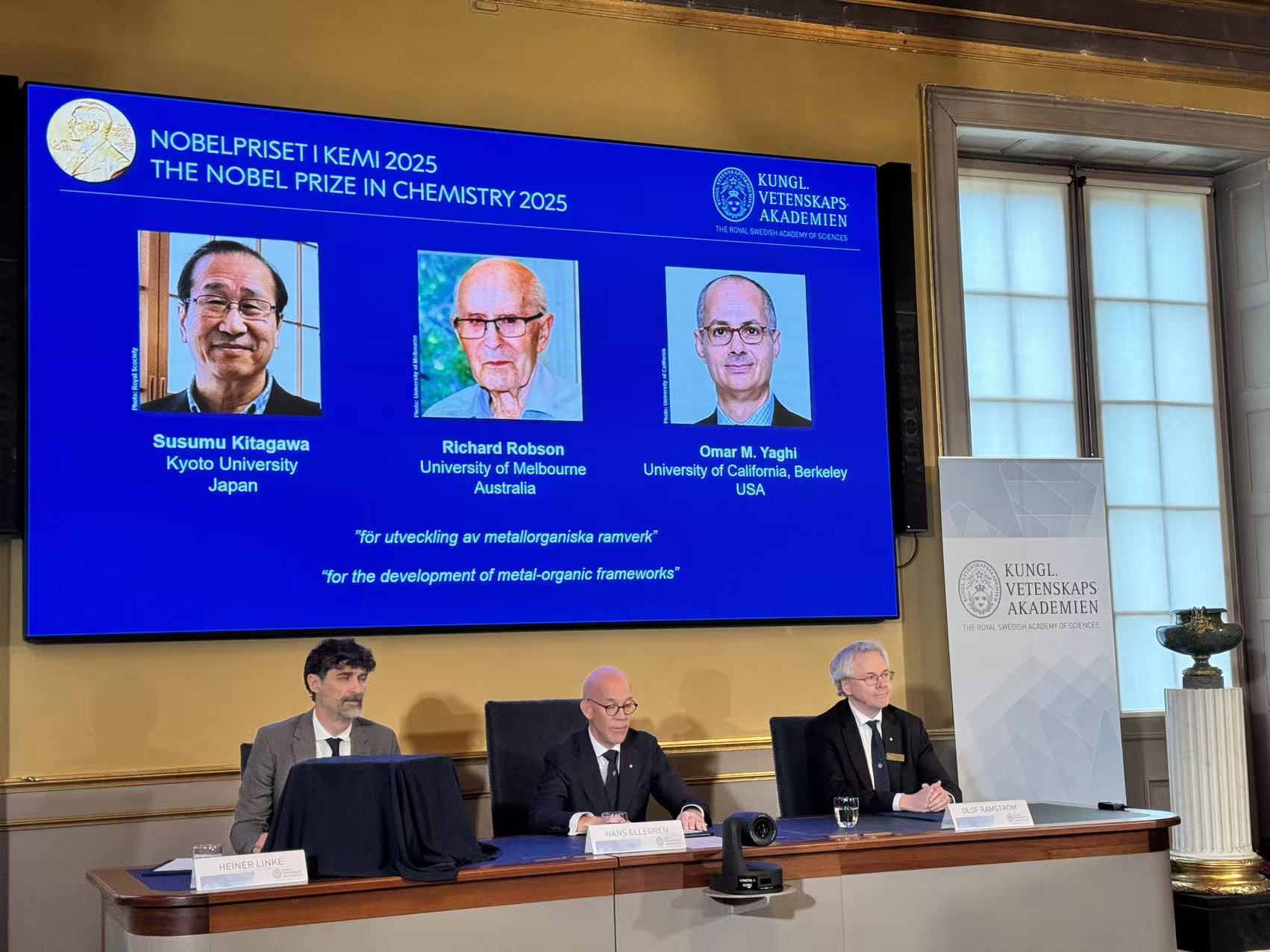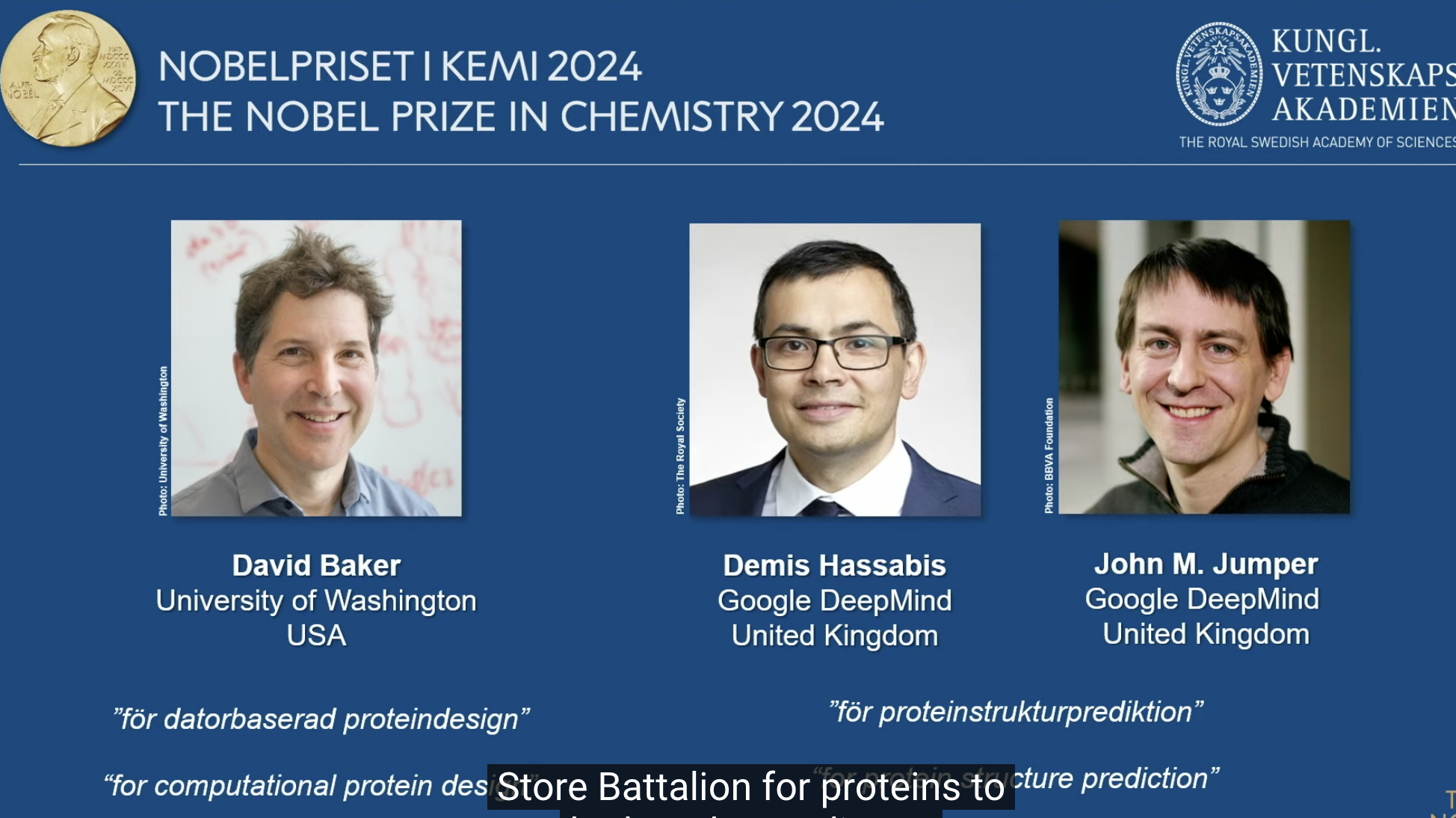

On October 9, the winners of the 2024 Nobel Prize in Chemistry were announced. David Baker, Demis Hassabis, and John Jumper will share this honor. Baker has made significant contributions in the field of computational protein design, while the other two have achieved remarkable success in protein structure prediction. This marks another recognition of achievements related to artificial intelligence (AI) following the award of the Physics Prize this year.
A Well-Deserved Recognition
As one of the most prestigious scientific awards globally, the Nobel Prize generates a multitude of predictions each year before its announcement. Prior to the announcement of the 2024 Nobel Prize in Chemistry, the three scientists in line for the award were already highly regarded, making the outcome a widely anticipated one.
“Especially Baker, as he is a pioneer in the field of computational protein design and has continuously produced internationally advanced research results. I believe their award is well-deserved,” said Xu Chunchang, an assistant professor at Tsinghua University’s Biomedical Research Institute and a researcher at the Beijing Institute of Life Sciences. He noted that, following the Physics Prize awarded to machine learning scientists this year, the Chemistry Prize continues to acknowledge scientists in the field of computational research, reflecting the extraordinary scientific value of AI.
“The awarded results are closely related to my research area and serve as an inspiration for us researchers,” said Lin Shixian, a researcher at Zhejiang University’s Institute of Life Sciences, excitedly. One of the awardees, Jumper, is only 39 years old, which is inspiring for many young researchers.
Protein structure prediction has always been a critical focus in computational biology and structural biology. According to Yang Mingjun, a professor at the School of Life Sciences at Tsinghua University, early protein structure prediction primarily relied on homologous protein structures, but the number of experimentally resolved protein structures is quite low in relation to the total number of proteins, resulting in limited prediction efficiency and accuracy. Later on, with the rise of machine learning and rapid development of AI, scientists began to explore the application of AI in protein structure prediction, leading to the development of structure prediction tools such as “AlphaFold” and its subsequent versions. This achievement significantly improved the accuracy and efficiency of protein structure prediction, nearly solving the issue for individual protein structures and promising to bring significant changes to drug development.
The Vast Potential of AI in Research
This Nobel Prize in Chemistry not only honors the recipients but also constitutes an important recognition of the deep application of artificial intelligence in basic scientific research.
Yang Mingjun believes that the research resulting in this award defines a paradigm that can theoretically address all scientific issues: starting with real-world problems and transforming them into input data that AI can process, followed by deep learning networks that ultimately yield results.
“For any problem that can produce an output through input, AI can theoretically serve as a powerful tool, reflecting the vast potential of AI in scientific research.” In Yang's view, the application of this technology is not limited to fields like biology, chemistry, and physics; its scope largely depends on how to abstract real-world problems (or data) into a form that AI can learn and process, as well as whether there is sufficient authentic data to train and build deep learning networks.
“The breakthrough of AI in protein design can be seen as a combination of favorable timing, location, and human factors, seamlessly coming together.” Yang explained that the primary sequence of protein structures is relatively simple, and there is a standardized representation for the three-dimensional structural output. Additionally, over the past few decades, structural biology has accumulated a wealth of real protein structure data.
Xu Chunchang also noted that the potential of AI in health-related fields like biology, chemistry, and medicine is just beginning to unfold, with plenty of room for development in the future.
“Take computational protein design, which I am most familiar with, as an example. Although relevant achievements were recognized with this award this year, computational methods still face significant challenges in functional protein design,” Xu said. He highlighted that further improvements to AI algorithms could enable more accurate design of essential functional proteins like enzymes and antibodies, potentially leading to the creation of truly practical new proteins.
Xu continued to stress that the importance of AI in scientific research is becoming increasingly prominent, and scientists must actively embrace new research paradigms while also striving to avoid the limitations of AI. “AI is not a cure-all; scientists need to leverage its strengths while minimizing its weaknesses to promote more effective applications in basic research,” he said, advocating for a responsible application of AI that avoids scientific unethical practices and harm to human health.
(This article also includes contributions from Zhang Jiaxing, a reporter from the Science and Technology Daily.)
Scientists Welcome the Golden Age of AI
Zhang Mengran
Following the announcement of the Nobel Prize in Natural Sciences, the simultaneous acknowledgment of researchers in AI by both the Nobel Prize in Chemistry and Physics has attracted significant attention. This recognition is a testament to the widespread application and profound impact of AI technology across various scientific fields.
This “cross-disciplinary” acknowledgment indicates that AI has transcended its status as merely a branch of computer science, evolving into a vital tool for advancing scientific research and technological progress. It provides robust support for addressing long-standing scientific challenges and promotes scientific advancement on multiple levels. The Nobel Prize not only applauds individual achievements of scientists but also affirms the trend of AI-assisted scientific research.
A group of scientists is shining brightly in this golden age of AI. This scene evokes memories of the golden age of physics in the last century — from 1900 to 1925, scientific masters like Einstein, Bohr, Schrödinger, Heisenberg, Dirac, and Marie Curie produced a wealth of results. We look forward to innovations in the field of AI unlocking new windows to the world for people; we believe that this Nobel Prize will inspire more young individuals to pay attention to AI and its applications in science, thus giving rise to a new generation of interdisciplinary talent.


